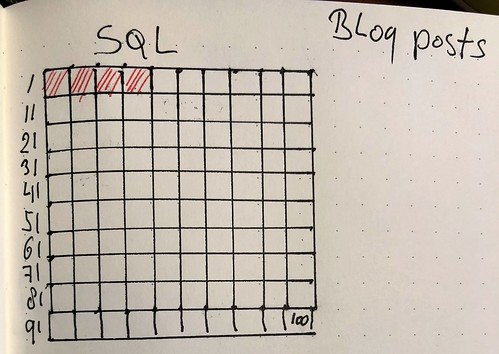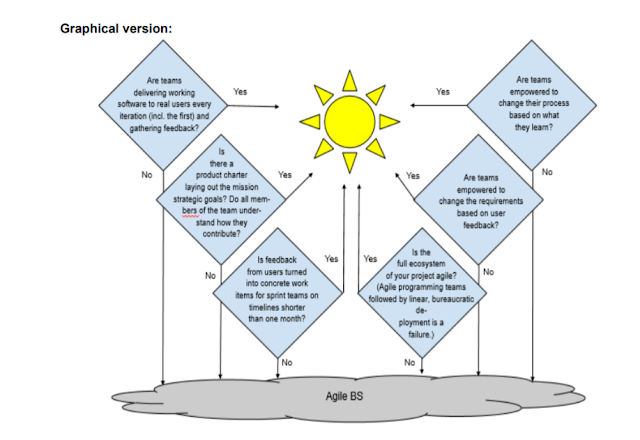This Week I Learned
Continued with the Getting Started with Docker Swarm Mode Pluralsight course
Finished A History of Japan by R.H.P. And J. G. Caiger Mason
Did you know, you can use emojis in output from SSMS?
More info, including the code to run can be found here: Did you know, you can use emojis in output from SSMS?
This Week I Tweeted
Why are glasses so expensive? The eyewear industry prefers to keep that blurry
It’s a question I get asked frequently, most recently by a colleague who was shocked to find that his new pair of prescription eyeglasses cost about $800.
Why are these things so damn expensive?
The answer: Because no one is doing anything to prevent a near-monopolistic, $100-billion industry from shamelessly abusing its market power.
Prescription eyewear represents perhaps the single biggest mass-market consumer ripoff to be found.
The stats tell the whole story.
Totally agree
The Internals of PostgreSQL for database administrators and system developers
In this document, the internals of PostgreSQL for database administrators and system developers are described.
PostgreSQL is an open source multi-purpose relational database system which is widely used throughout the world. It is one huge system with the integrated subsystems, each of which has a particular complex feature and works with each other cooperatively. Although understanding of the internal mechanism is crucial for both administration and integration using PostgreSQL, its hugeness and complexity prevent it. The main purposes of this document are to explain how each subsystem works, and to provide the whole picture of PostgreSQL.
This document is based on the second part of the book I wrote in Japanese in 2012 (ISBN-13: 978-4774153926) which is composed of seven parts, and covers version 11 and earlier.
Contents
Did you know that Google is constantly killing useful operators?
That’s why most existing lists of Google search operators are outdated and inaccurate.
For this post, I personally tested EVERY search operator I could find.
Here is a complete list of all working, non‐working, and “hit and miss” Google advanced search operators as of 2018.
Austro-Hungarian emperor Franz Josef defaced
See more info here: The revenge of Yugoslavia on Bosnian stamps of 1906
If you are interested in philately, see also, why do some of these stamps have black perforations?

American Gods | Season 2 Official TrailerTotally agree
The Internals of PostgreSQL for database administrators and system developers
In this document, the internals of PostgreSQL for database administrators and system developers are described.
PostgreSQL is an open source multi-purpose relational database system which is widely used throughout the world. It is one huge system with the integrated subsystems, each of which has a particular complex feature and works with each other cooperatively. Although understanding of the internal mechanism is crucial for both administration and integration using PostgreSQL, its hugeness and complexity prevent it. The main purposes of this document are to explain how each subsystem works, and to provide the whole picture of PostgreSQL.
This document is based on the second part of the book I wrote in Japanese in 2012 (ISBN-13: 978-4774153926) which is composed of seven parts, and covers version 11 and earlier.
Contents
- Chapter 1. Database Cluster, Databases and Tables
- Chapter 2. Process and Memory Architecture
- Chapter 3. Query Processing
- Chapter 4. Foreign Data Wrappers (FDW) and Parallel Query
- Chapter 5. Concurrency Control
- Chapter 6. VACUUM Processing
- Chapter 7. Heap Only Tuple (HOT) and Index-Only Scans
- Chapter 8. Buffer Manager
- Chapter 9. Write Ahead Logging (WAL)
- Chapter 10. Base Backup and Point-In-Time Recovery (PITR)
- Chapter 11. Streaming Replication
What are you wating for.. start reading.....
Since we are talking about PostgreSQL.....
I am thrilled to announce that we have acquired Citus Data, a leader in the PostgreSQL community. Citus is an innovative open source extension to PostgreSQL that transforms PostgreSQL into a distributed database, dramatically increasing performance and scale for application developers. Because Citus is an extension to open source PostgreSQL, it gives enterprises the performance advantages of a horizontally scalable database while staying current with all the latest innovations in PostgreSQL. Citus is available as a fully-managed database as a service, as enterprise software, and as a free open source download.
Since the launch of Microsoft’s fully managed community-based database service for PostgreSQL in March 2018, its adoption has surged. Earlier this month, PostgreSQL was named DBMS of the Year by DB-Engines, for the second year in a row. The acquisition of Citus Data builds on Azure’s open source commitment and enables us to provide the massive scalability and performance our customers demand as their workloads grow.
Together, Microsoft and Citus Data will further unlock the power of data, enabling customers to scale complex multi-tenant SaaS applications and accelerate the time to insight with real-time analytics over billions of rows, all with the familiar PostgreSQL tools developers know and love.
This is really, really messed up
Google Search Operators: The Complete List (42 Advanced Operators)
Since the launch of Microsoft’s fully managed community-based database service for PostgreSQL in March 2018, its adoption has surged. Earlier this month, PostgreSQL was named DBMS of the Year by DB-Engines, for the second year in a row. The acquisition of Citus Data builds on Azure’s open source commitment and enables us to provide the massive scalability and performance our customers demand as their workloads grow.
Together, Microsoft and Citus Data will further unlock the power of data, enabling customers to scale complex multi-tenant SaaS applications and accelerate the time to insight with real-time analytics over billions of rows, all with the familiar PostgreSQL tools developers know and love.
That's pretty cool..hopefully they will leave the team alone and not do a FoxPro type move..... But since Ballmer is not in charge anymore, I have faith
The bucket contained 21 files containing 23,000 pages of PDF documents stitched together — or about 1.3 gigabytes in size. Diachenko said that portions of the data in the exposed Elasticsearch database on Wednesday matched data found in the Amazon S3 bucket, confirming that some or all of the data is the same as what was previously discovered. Like in Wednesday’s report, the server contained documents from banks and financial institutions across the U.S., including loans and mortgage agreements. We also found documents from the U.S. Department of Housing and Urban Development, as well as W-2 tax forms, loan repayment schedules and other sensitive financial information.
This is really, really messed up
Google Search Operators: The Complete List (42 Advanced Operators)
Did you know that Google is constantly killing useful operators?
That’s why most existing lists of Google search operators are outdated and inaccurate.
For this post, I personally tested EVERY search operator I could find.
Here is a complete list of all working, non‐working, and “hit and miss” Google advanced search operators as of 2018.
All you need to step up your Google Fu
Some cool stuff you might enjoy
See more info here: The revenge of Yugoslavia on Bosnian stamps of 1906
If you are interested in philately, see also, why do some of these stamps have black perforations?
Took this pic of Liverpool player Mo Salah mural near time square

Can't wait to watch that, have watched season I and have also read the book last year














